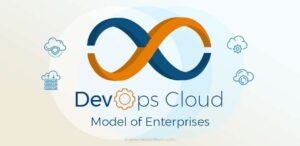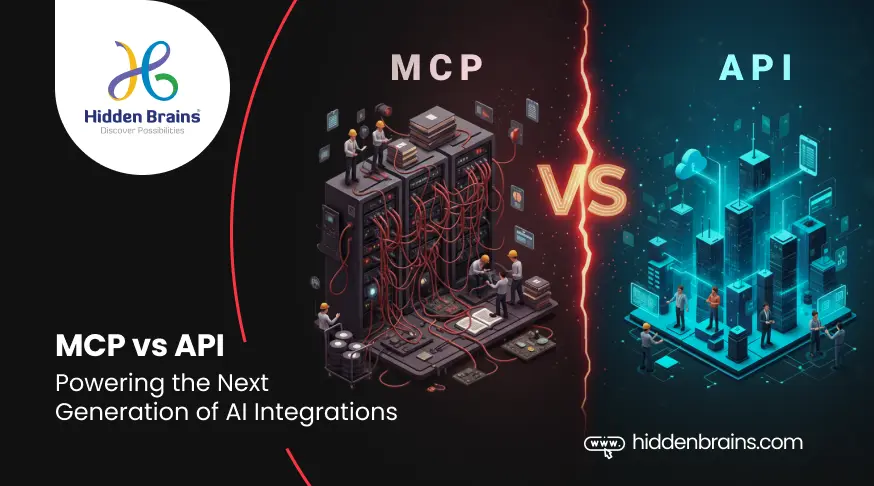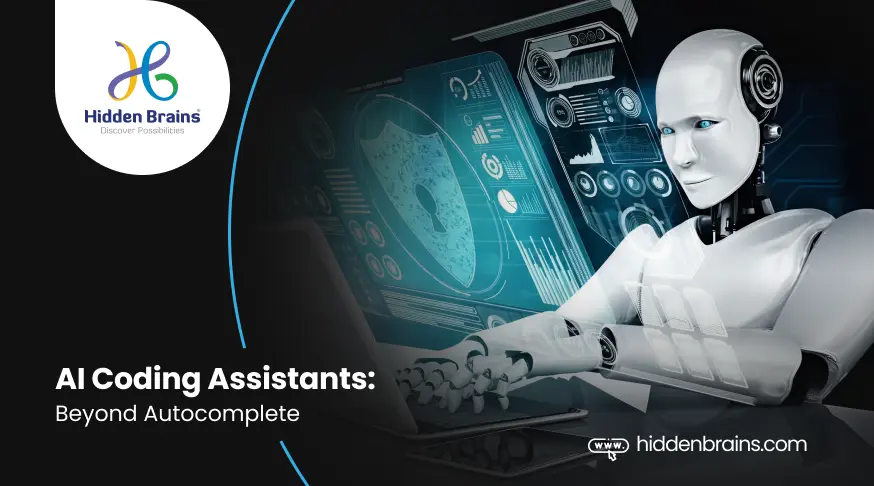Quick Summary
DevOps-Cloud architecture is redefining how modern enterprises build, deploy, and scale software. By merging DevOps agility with cloud flexibility, businesses achieve faster delivery, seamless collaboration, and reduced costs. This synergy drives innovation, enhances system reliability, and helps organizations stay competitive in a rapidly evolving digital world. Discover how it’s transforming enterprise efficiency and growth.
DevOps and Cloud Architecture is indeed a good combination. While other enterprises are struggling to streamline tier operations, the ones using cloud and DevOps are experiencing astonishing results and delivering huge value. In order to take the full advantage of the Cloud – DevOps combination, enterprises need to define and address the core objectives to ensure nothing is missed out.
Development, testing, staging, deployment and operations are integrated in a continuous process so that they can be fully automated. In this procedure, all the parts of the integrated process are automated, including self-provisioning and auto-provisioning target platform resources in the cloud.
All the changes in applications should be ideally completed in one day, though the deployment platform supports unlimited provisioning of resources via the cloud. The complete DevOps process can be operated in cloud through Amazon Web Services, Google and Microsoft including public and private cloud models.
Business Drivers Fueling the Use of Cloud-DevOps Architecture
Let’s know about the major business drivers that require Cloud – DevOps architecture:
- Businesses can explore new capabilities by experimenting with renewed Cloud – DevOps architecture.
- This model empowers business to introduce new products, enter new markets and revamp existing products with enhancements.
- DevOps allows for rapid delivery and quick feedback for making necessary adjustments.
DevOps is more dependent on people than technology. As a business leader, you need to analyze the expertise and skill of resources you have in-house and required skillsets as you make a move to DevOps and Cloud. At such times, two probable options are either recruiting new people with required talent or training a group of people from existing resources to operate on this architecture. Such strategic planning is required during this transition, thereby helping innovative organizations to avoid major upheavals.
Best Practices of DevOps: Making the Best Use of Cloud Computing
Utilizing DevOps core principles and implementing best practices enable businesses to take the benefit of cloud computing technology as well as mitigate the associated risks. Organizations that deploy applications on provision servers are capable enough of handling challenges in Cloud.
Below are the core capabilities of DevOps that help in handling cloud-based computing:
Infrastructure as code
In case of DevOps architecture, infrastructure as code is responsible for managing server, building middleware and installing application code that altogether contribute to build the entire system architecture. DevOps lays a strong focus on handling the essential infrastructure trough automated and programmable procedures. Beyond scripting of installation process, technology subject matter experts in coordination with other operation experts together create automated and transparent processes.
Provisioning servers
It is vital to know the baseline of operating system while planning to build servers in the cloud. Application programming interface (API) enable system administrators in automating the procedures for provisioning the server. These procedures include scripts for installing components with the help of package installers.
Automated application deployment
DevOps architecture has a perfect set of procedures for automated application deployments. Leveraging the practices of continuous integration and deployment, DevOps can be utilized to create the fully automated deployment pipeline. Creating a culture of shared knowledge and expertise, DevOps architecture aims to build automated deployment pipeline.
In addition to above mentioned pointers, knowledge sharing, managing the complete application lifecycle management (ALM), continuous integration and delivery, QA and testing are also included in the best practices of DevOps that allow in taking the maximum advantage of cloud computing.
Exploring the DevOps Advantage
For those business leaders that are wondering on how many immediate advantages they can leverage by moving to DevOps Cloud architecture:
- DevOps give enterprises the speed they need to survive in this competitive world. Enterprises are paced up for application delivery initiatives. This lead time and speediness is directly connected to market opportunity.
- Secured connection of cloud, backend systems and managed APIs enable controlled access from external applications.
- It becomes possible to get timely feedback through DevOps model. As a result, business leaders can experiment with new strategies and analyze the outcomes. Technical teams get a chance to learn from feedback and detect performance issues in deployed applications.
- DevOps-Cloud model accounts for flexible and decoupled architecture that enables independent deployments of business capabilities.
Hidden Brains is a leading enterprise application development company helping businesses leverage the potential of DevOps-Cloud model through emerging technology services.
Frequently Asked Questions (FAQs)
Got questions about DevOps and cloud architecture in enterprises? Here’s everything you need to know, broken down in simple, clear answers.
1. What are the key benefits of combining DevOps with cloud architecture?
When DevOps meets cloud architecture, enterprises gain speed, scale, and flexibility. You release software faster thanks to automation and CI/CD pipelines. You scale infrastructure easily because the cloud adapts to demand. You cut overhead by shifting to pay-as-you-go models. This trio – DevOps, cloud, automation drives growth and operational efficiency.
2. How does cloud-based infrastructure support DevOps practices in enterprises?
Cloud infrastructure offers on-demand compute, storage, and networking without waiting for hardware. DevOps teams leverage this by using infrastructure as code (IaC) and automated environment provisioning. That means consistent setups, fewer errors, and faster deployments. Enterprises benefit by reducing manual steps and focusing on innovation.
3. What challenges do enterprises face when implementing DevOps and cloud architecture together?
The biggest hurdles include legacy systems, tool-sprawl, and skill gaps. Legacy apps resist containerization. Too many tools confuse teams. Many staff lack DevOps or cloud expertise. To succeed, enterprises must align culture, invest in training, and start with a pilot use-case before scaling across the organization.
4. What key technologies support DevOps-cloud architecture in enterprise settings?
Technologies such as containerization (Docker/Kubernetes), CI/CD pipelines, IaC (Terraform/CloudFormation), monitoring & observability tools, and secure cloud services form the stack. Together, they enable continuous delivery, fast feedback, and scalable systems. Enterprises that adopt these see higher reliability and faster business outcomes.
5. How do enterprises measure the success of DevOps-cloud architecture initiatives?
Success isn’t just technical, it’s about business impact. Key metrics include:
– Deployment frequency and lead-time to production
– Change-failure rate and recovery time
– Operational costs and infrastructure utilization
– Time-to-market for features
When these improve, enterprises know their DevOps-cloud architecture is working.
6. What should enterprises prioritize when starting DevOps-cloud architecture transformation?
Start by defining business goals: faster releases? Better uptime? Cost savings? Then pick a pilot project such as automating deployments or moving one service to the cloud. Invest in training teams and choose scalable, cloud-native tools. Finally, establish a culture of feedback, measurement, and continuous improvement. This approach ensures long-term growth.
Conclusion
DevOps-Cloud Architecture isn’t just a tech upgrade; it’s a strategic advantage. By unifying development, operations, and cloud automation, enterprises gain speed, resilience, and continuous innovation. The result? Faster releases, smarter scaling, and a future-ready digital foundation. It empowers teams to experiment confidently and deliver high-impact features with less friction. Ultimately, it helps enterprises stay adaptive and competitive. As technology demands grow, this approach ensures businesses can evolve seamlessly without compromising performance or reliability.






























































































![Sales & Distribution [Oil & Gas] Sales & Distribution [Oil & Gas]](https://www.hiddenbrains.com/blog/wp-content/themes/blankslate/assets/images/sales_and_distribution-icon.74d08193.svg)

![Fluid Terminal Management [Oil & Gas] Fluid Terminal Management [Oil & Gas]](https://www.hiddenbrains.com/blog/wp-content/themes/blankslate/assets/images/fluid_terminal_management-icon.4b3a27a4.svg)































![Sales & Distribution [Oil & Gas] Sales & Distribution [Oil & Gas]](https://www.hiddenbrains.com/blog/wp-content/themes/blankslate/assets/images/sales_and_distribution-icon.74d08193.svg?1.0.0)
![Fluid Terminal Management [Oil & Gas] Fluid Terminal Management [Oil & Gas]](https://www.hiddenbrains.com/blog/wp-content/themes/blankslate/assets/images/fluid_terminal_management-icon.4b3a27a4.svg?1.0.0)























































































































































































